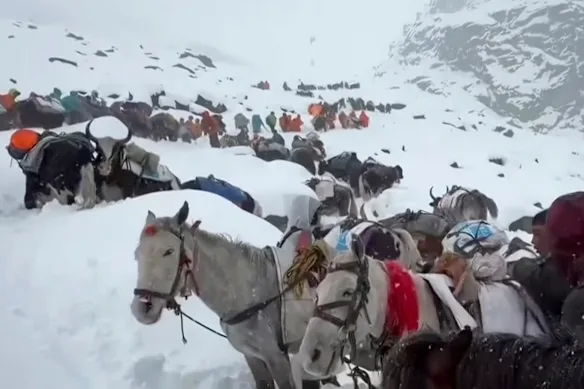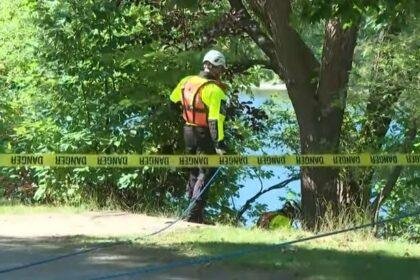Heavy Snowfall Traps Hikers on Mount Everest: A Race Against Nature
In a dramatic turn of events, hundreds of hikers found themselves stranded on Mount Everest due to an unexpected and severe snowstorm that began on Friday evening and continued into Saturday. The snowfall, which reached depths of up to one meter, has raised concerns about the safety of trekkers and the effectiveness of rescue operations in the region.
The Situation Unfolds
Reports indicate that a hiker who managed to descend before the snow blocked the trails shared alarming details with Jimu, stating that the snow had crushed tents and left many trekkers in precarious situations. Local government officials have organized rescue efforts, with plans for the remaining trekkers to arrive in Qudang in stages. However, as of Monday evening, updates on the status of these individuals were scarce, leaving families and friends anxiously awaiting news.
The local guides and support staff, who play a crucial role in ensuring the safety of trekking parties, have not been accounted for in the reports, raising further concerns about the overall situation.
Eyewitness Accounts
Eric Wen, a member of a trekking party of 18, recounted the harrowing experience of his group. “It was raining and snowing every day, and we did not see Everest at all,” he said. Faced with worsening conditions, the group decided to return from their fifth campsite on Saturday night. Wen described the struggle to keep their tents intact, stating, “We had to clear the snow every 10 minutes; otherwise, our tents would have collapsed.”
Despite their best efforts, two men and a woman in Wen’s group suffered from hypothermia as temperatures plummeted below freezing. Remarkably, the majority of the expedition emerged largely unscathed, including several guides and support staff who managed the yaks transporting their equipment.
The Geography of Danger
Mount Everest, standing at an imposing 8,850 meters, is not just a peak; it is a symbol of human endurance and ambition. The Karma Valley, where the recent incidents occurred, is a relatively untouched area of the Everest region, known for its lush vegetation and pristine alpine forests. This contrasts sharply with the arid north face of the mountain, which attracts a significant number of tourists due to its easier access via paved roads.
The recent snowfall has highlighted the unpredictable nature of the weather in this region, particularly during October, which is typically a peak season for trekking. This time of year usually sees clearer skies as the Indian monsoon recedes, making the sudden snowstorm all the more alarming.
Broader Implications
The situation on Everest is not isolated. To the south in Nepal, heavy rains have triggered landslides and flash floods, resulting in significant destruction and loss of life. Reports indicate that at least 50 people have died since Friday due to these natural disasters, with 37 fatalities occurring in the eastern Ilam district bordering India. The impact of these weather events underscores the vulnerability of mountainous regions to climate variability and extreme weather.
In a tragic incident, a South Korean trekker lost his life while attempting to climb Mera Peak, which stands at 6,476 meters. His body was recovered by a rescue helicopter on Monday, while his guide was successfully rescued. This incident serves as a stark reminder of the inherent risks associated with high-altitude trekking, particularly in unpredictable weather conditions.
The Role of Local Communities
As rescue efforts continue, local villagers have stepped up to assist stranded hikers. Reports show that they are using oxen and horses to navigate the treacherous terrain and reach those in need. This community-driven response highlights the resilience and solidarity often found in remote regions, where local knowledge and resources can make a significant difference in emergency situations.
Conclusion
The recent snowstorm on Mount Everest has not only trapped hundreds of hikers but has also raised critical questions about safety protocols and the preparedness of rescue operations in high-altitude environments. As the situation develops, the focus remains on ensuring the safety of all trekkers and the local guides who support them. The events serve as a reminder of the unpredictable nature of mountain weather and the importance of respecting the power of nature. As rescue efforts continue, the hope is that all those affected will be brought to safety, and lessons will be learned to better prepare for future challenges in this majestic yet perilous landscape.











